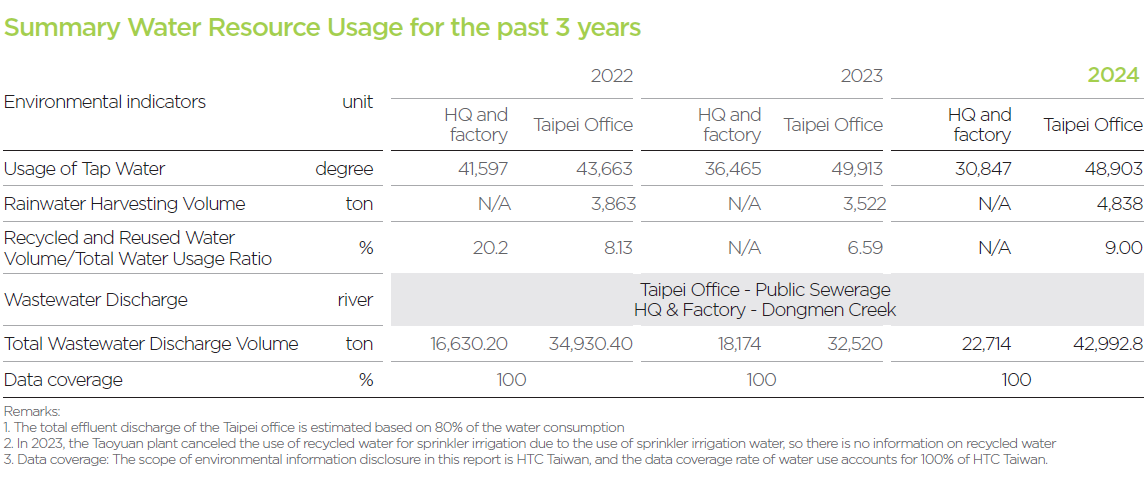Sustainable Environment
HTC is committed to protect environment, integrate the concept into our corporate culture, enhance employees' awareness of environmental protection and caring, improve energy, water and waste management, and reduce the impact to biodiversity. In addition, HTC organizes environmental protection activities for our employees and further improve their environmental awareness. We believe that only through working together can we create more value for the environment and the society. Energy and climate change related action.
Energy and Emission
We have devised a dual-aspect strategy composed of “adopting an energy management system” and “performing energy-saving practice.” On one hand we strive for optimizing our management system to reduce energy consumption, and on the other we use energy-saving technology to improve the energy efficiency of our products. In 2024, a total of NT$ 15.08 million was invested in the addition and replacement of energy-saving improvement equipment.
Electricity Consumption Analysis of HTC Global

HTC's annual greenhouse gas emission information is disclosed using two major frameworks: the ISO 14064-1:2018 verification information based on the operational control method and the GHG Protocol's full scope inventory information. This includes a summary of the greenhouse gas emissions from the company and all its subsidiaries as reported in the consolidated financial statements.
In 2024, the total greenhouse gas emissions calculated according to the GHG Protocol amounted to 24,321 tCO2e. Of this, the total verified emissions for HTC globally, as per the significance analysis and verified under ISO 14064-1, were 10,426.506 tCO2e. Compared to the baseline year of 2021, the change in greenhouse gas emissions across all scopes in 2024 did not exceed the significance threshold of 3%. As a whole, CO2 was the major greenhouse gas generated by HTC; CH4 and N2O emissions accounted for a very minimal ratio. PFCs, SF6, NF3, and HFCs emissions were maintained at 0. HTC does not emit sulfur oxides or other exhaust gases, nor does it use substances that may deplete the ozone layer. The cooling systems in HTC buildings utilize environmentally friendly refrigerants like R-134a and R-410a, commonly available in the market, and have completed the phase-out of other refrigerant models with high Global Warming Potential (GWP) values to reduce the rapid warming effects caused by ozone layer depletion.
On our path to net-zero, in addition to complying with legal compliance requirements and the expectations of stakeholders, HTC is taking proactive measures to plan ahead:
1. Completed "HTC Carbon Management Platform" construction at the end of 2023 and conducted inventory disclosure and target management of greenhouse gas emissions in full scopes of the company through a real-time, digital, and transparent cloud platform.
2. Used the "HTC Carbon Management Platform" as a tool to complete the inventory and verification of greenhouse gas emissions (2023) in full scopes of the parent company and all subsidiaries by the end of the second quarter of 2024, which is 3 to 4 years ahead of regulatory requirements!
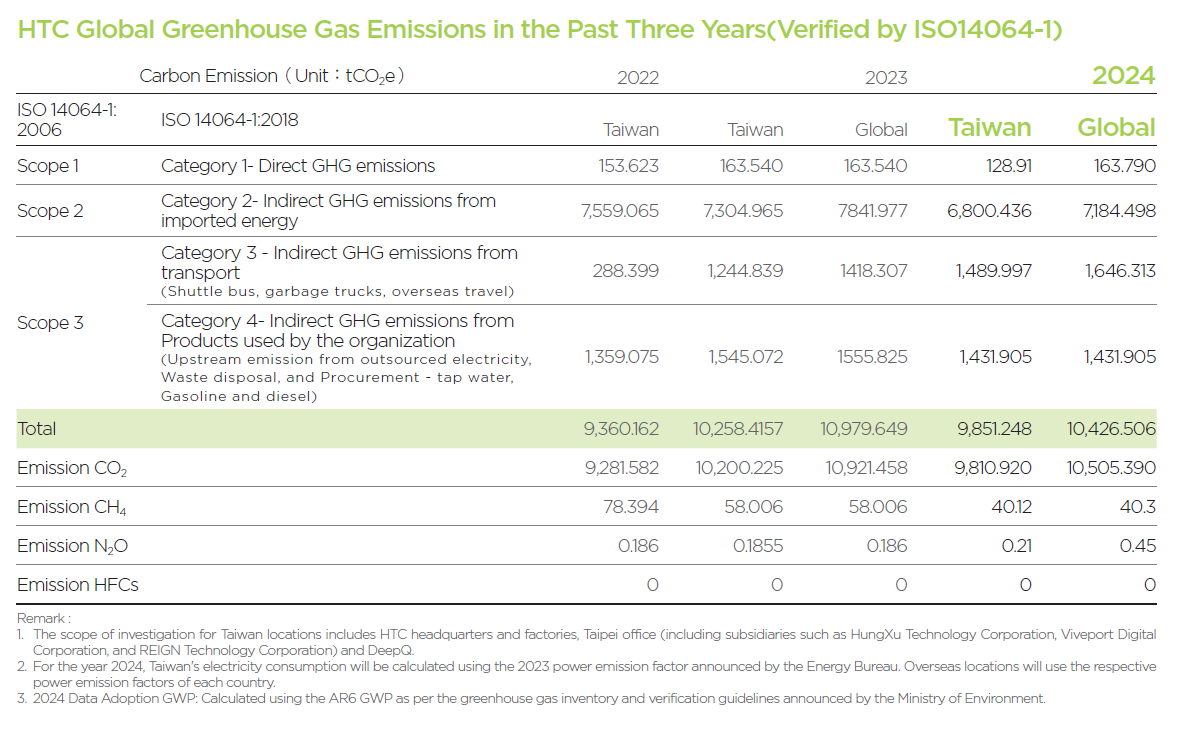
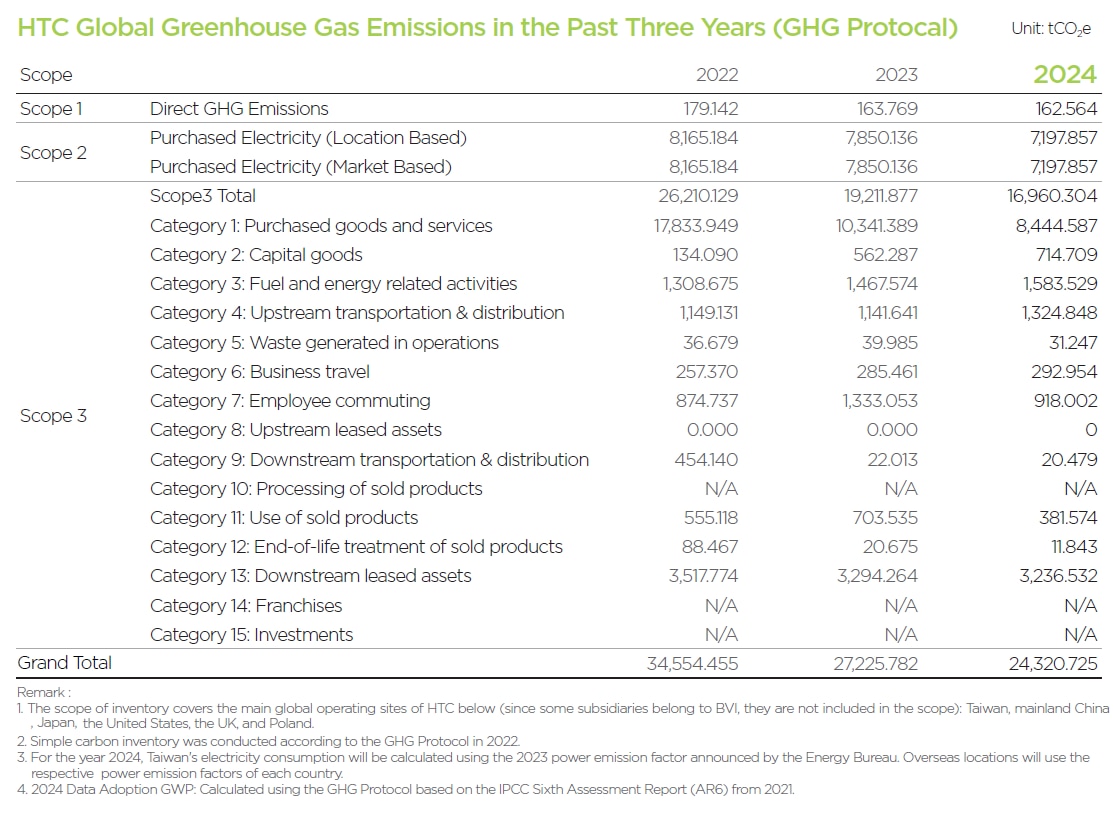
Green Building
HTC is committed to reducing its environmental impact. In 2013,
HTC's Taipei Office
obtained the Green Building Label of the Ministry of the Interior and the LEED Gold certification of the US Green Building Council(USGBC). When planning the Taipei Office, we considered sustainability and the use of low energy resources in the design, construction, and operations. From beginning of use of the building to 2024, EUI was 101 kWh/m2/year.
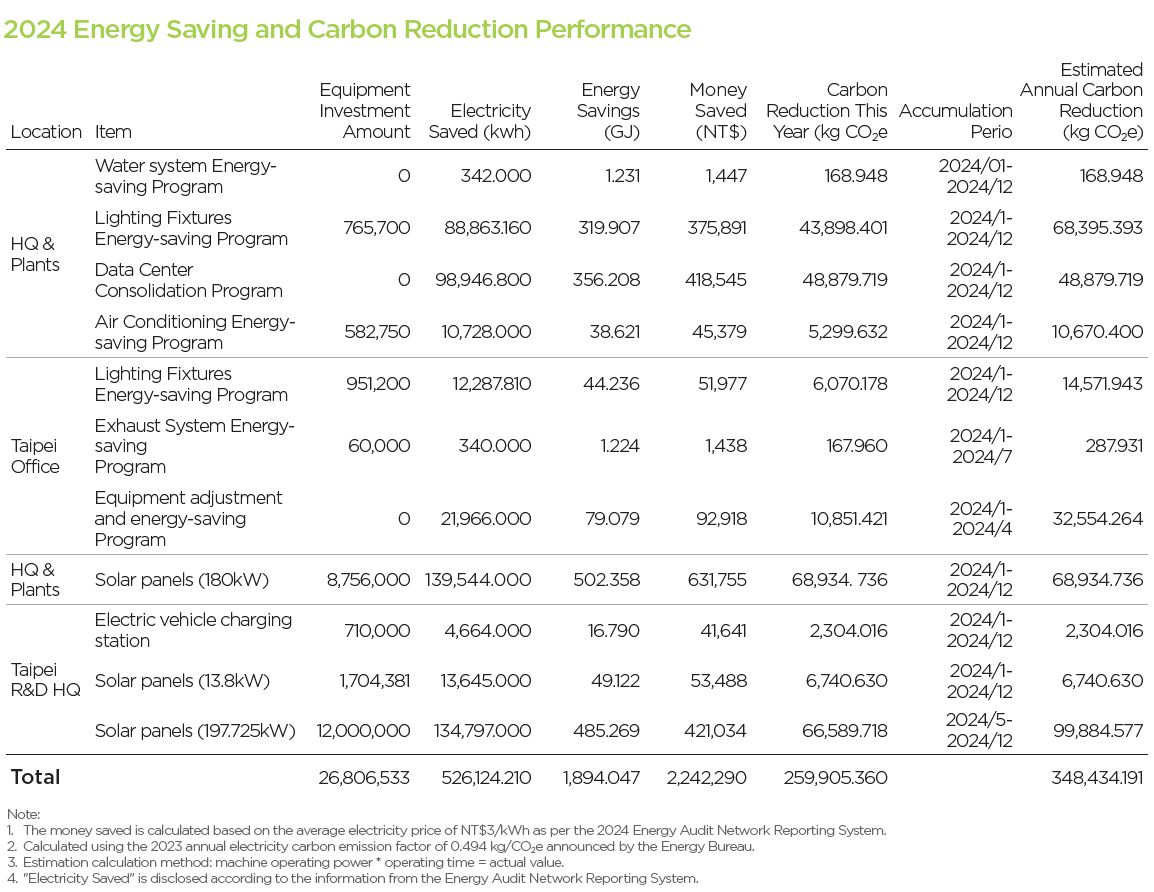
The Use of Green Energy
To create a low carbon life, we use only green energy, which includes the use of solar panels, eco-cooler air conditioners, and other low carbon emission sources like electric cars.
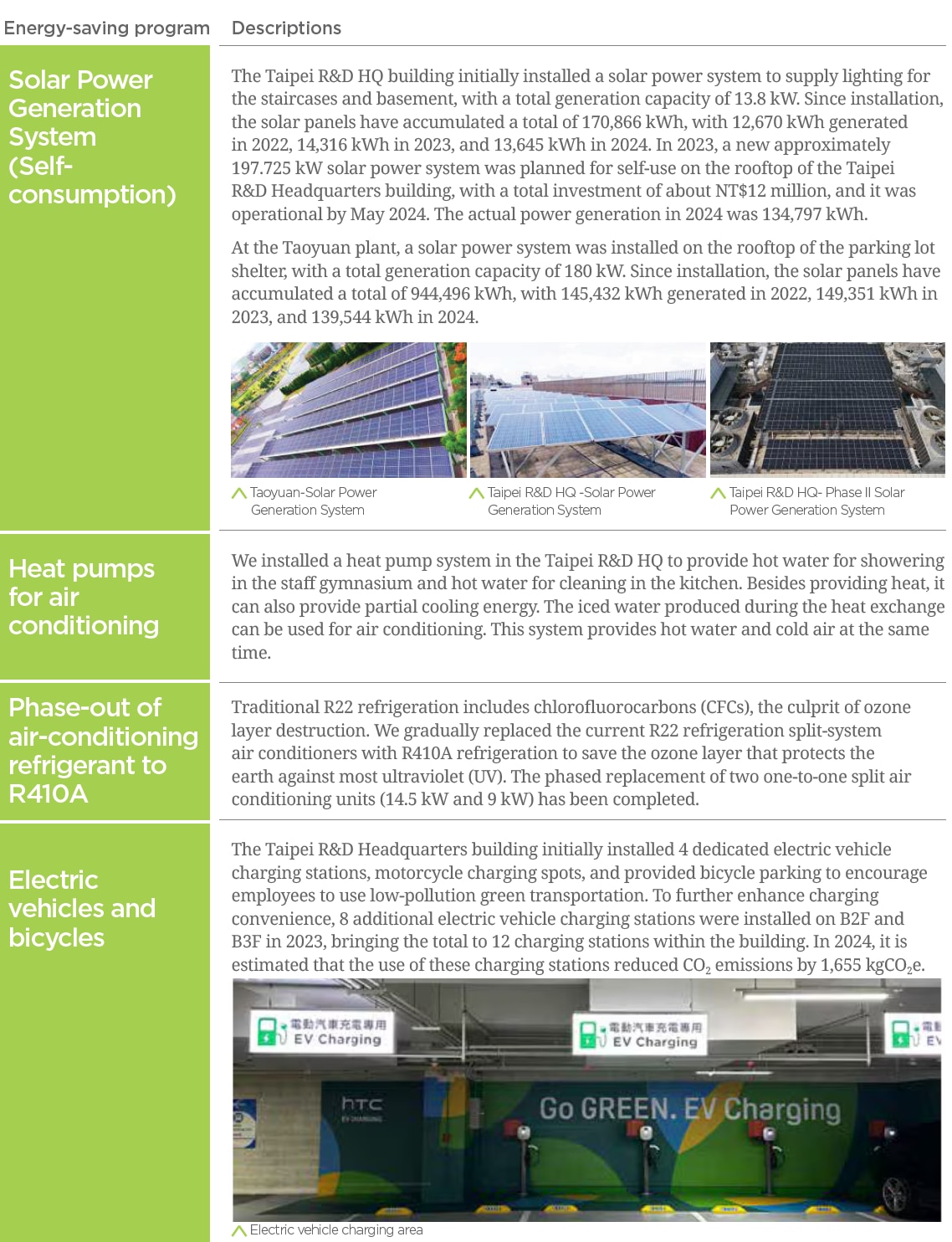
Water Resource Management
As global warming intensifies and climate change becomes a pressing issue, water resource management has become increasingly important. While our processes require minimal water usage and have low environmental impact on the surrounding areas, we still strive to reduce water consumption and promote water resource management and recycling.
Our water supply comes from Taiwan Water Corporation, and our production processes are dry processes that do not generate wastewater. The wastewater generated is solely from the general office and daily activities of our employees. To ensure that we do not exert any adverse impacts on the water source areas, we refer to the World Resources Institute's "Aqueduct Water Risk Atlas," which indicates that Taiwan as a whole fall into the Low to Medium (1-2) category, posing no immediate threat to water resource. We also conduct wastewater testing to ensure that our discharged wastewater does not pose any negative impact on the water source and the environment.
